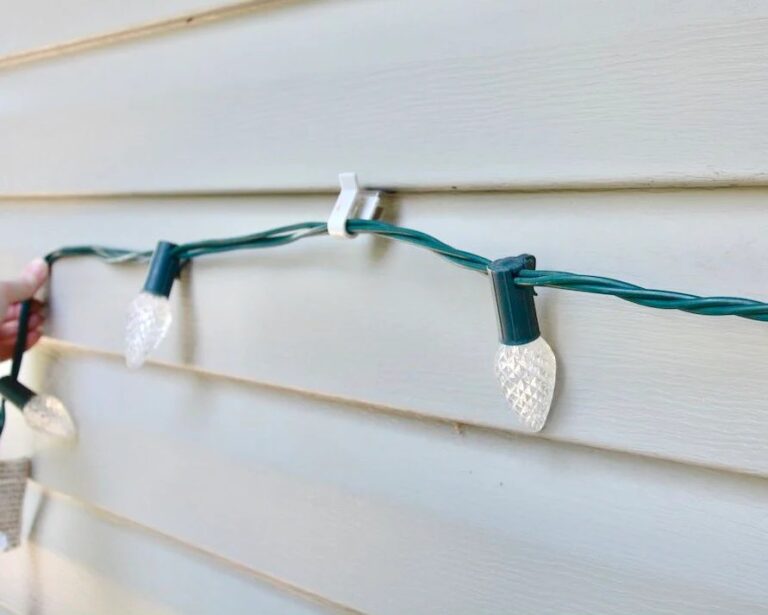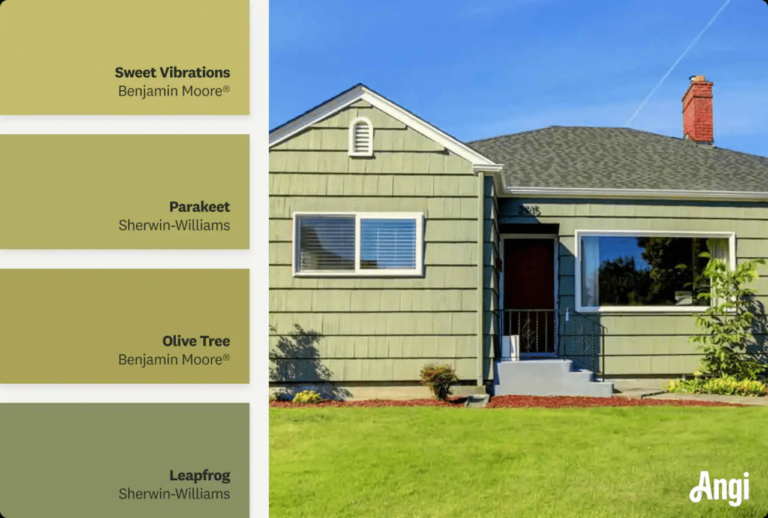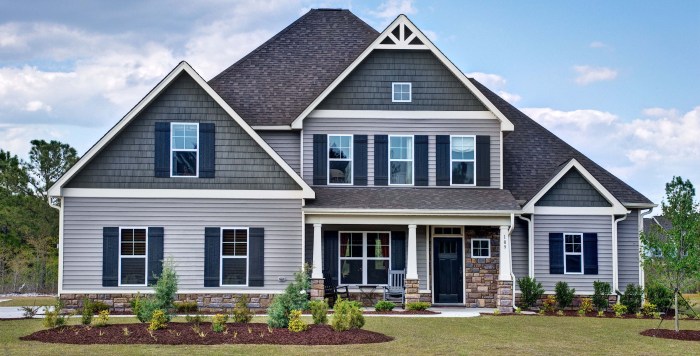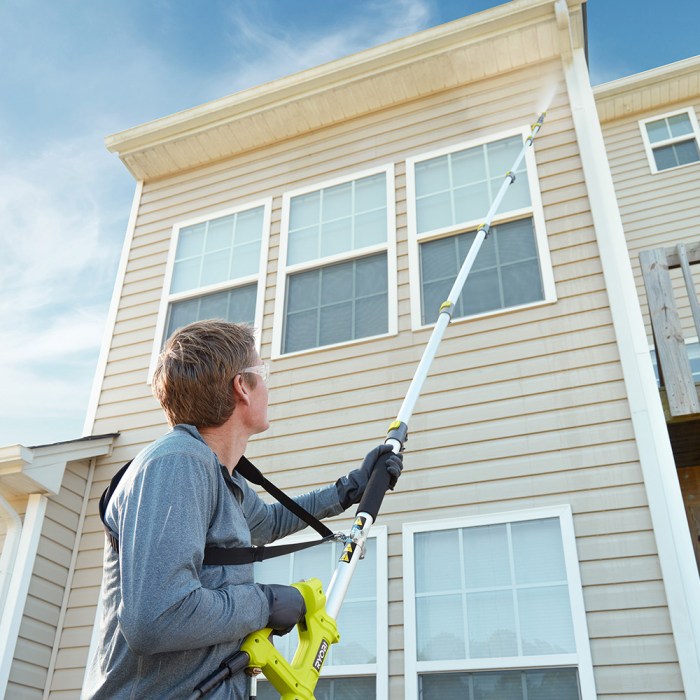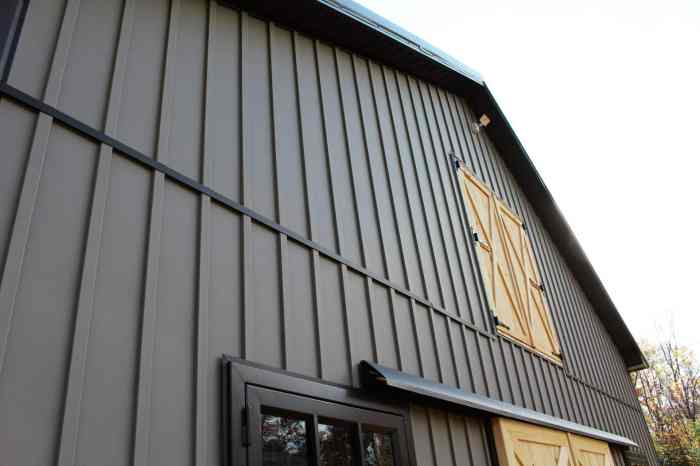Metal Sheets for Wall Covering: A Comprehensive Guide
Types of Metal Sheets for Wall Covering
Metal sheets for wall covering – Metal sheets offer a durable and aesthetically versatile option for wall cladding, providing a modern and striking finish to both interior and exterior spaces. The choice of metal depends on factors such as budget, desired aesthetic, and the specific environmental conditions of the building.
This section will explore the properties and applications of various metal sheets commonly used in wall covering.
Metal Sheet Types and Their Properties
Several metals possess the necessary characteristics for use as wall cladding. Each offers a unique combination of durability, corrosion resistance, and aesthetic appeal. The selection process should consider the long-term maintenance requirements and the overall design vision for the project.
| Metal Type | Properties | Cost | Suitable Architectural Styles |
|---|---|---|---|
| Aluminum | Lightweight, excellent corrosion resistance, readily available in various colors and finishes, relatively easy to fabricate and install. | Moderate | Modern, contemporary, industrial, minimalist |
| Steel | High strength, durable, cost-effective, can be coated for enhanced corrosion resistance (e.g., galvanized steel, stainless steel). Requires regular maintenance in harsh environments. | Low to Moderate | Industrial, rustic, contemporary |
| Copper | Excellent corrosion resistance (it develops a protective patina), aesthetically pleasing with its warm tones and aging characteristics, high cost. | High | Traditional, historical, high-end modern |
| Zinc | Good corrosion resistance, develops a protective patina, relatively lightweight, sustainable option. | Moderate to High | Modern, industrial, sustainable design |
Cost-Effectiveness of Metal Sheet Options
The cost of metal sheeting varies significantly depending on the type of metal, its thickness, the chosen finish, and the complexity of the installation. Steel generally offers the most cost-effective solution, especially when considering galvanized or pre-finished options. Aluminum provides a balance between cost and performance, offering good durability and corrosion resistance at a moderate price point.
Copper and zinc, while offering superior corrosion resistance and unique aesthetics, represent a higher initial investment. The long-term cost, however, should also be considered; materials with high corrosion resistance may require less maintenance over time, potentially offsetting the higher initial cost.
For example, a building clad in copper might require minimal maintenance for decades, while steel may need repainting or recoating periodically.
Architectural Applications of Metal Sheets
The choice of metal sheet often complements the overall architectural style of a building. Aluminum’s versatility lends itself to modern and contemporary designs, while steel’s industrial aesthetic is well-suited for loft conversions and industrial-style buildings. Copper’s rich patina and warm tones are frequently incorporated into traditional and historical architectural styles, creating a sense of timeless elegance.
Zinc’s unique appearance and sustainable properties make it a popular choice for environmentally conscious projects. The selection of metal sheet type should be carefully considered to ensure compatibility with the architectural style and design intent. For instance, using copper sheeting on a stark, minimalist building might clash aesthetically, while steel would be more appropriate.
Conversely, using aluminum sheeting on a historical building might detract from its character.
Installation Methods and Techniques
Installing metal wall sheets requires careful planning and execution to ensure a durable and aesthetically pleasing finish. The process involves several key steps, from surface preparation to final sealing, and the specific techniques employed will vary depending on the building type, wall structure, and the type of metal sheet used.Proper installation is crucial for preventing issues like water damage, corrosion, and premature failure of the wall cladding.
This section details the various methods and best practices to ensure a successful installation.
Surface Preparation
Thorough surface preparation is paramount for a successful installation. This involves cleaning the wall surface to remove any loose debris, dirt, dust, or old paint. Any existing imperfections, such as cracks or holes, should be repaired using appropriate patching compounds and allowed to cure completely before proceeding.
For exterior walls, addressing any moisture issues, such as leaks or water penetration, is critical. The surface should be dry and stable before the installation of the metal sheets begins. Priming the surface, particularly for exterior applications, can provide additional protection against corrosion and enhance adhesion.
Fastening Methods
Several fastening methods exist for securing metal sheets to walls. These include mechanical fasteners like screws and rivets, and adhesive systems. The choice of method depends on factors such as the type of metal sheet, wall material, and the desired aesthetic finish.
Mechanical fasteners provide a robust and secure connection, particularly suitable for exterior applications where wind loads are a concern. Adhesive systems offer a cleaner finish but may be less suitable for large sheets or areas subject to high stress.
Proper spacing and alignment of fasteners are essential to prevent warping or buckling of the metal sheets.
Sealing Techniques
Sealing is crucial for preventing water ingress and corrosion, especially in exterior applications. Appropriate sealants should be used at all joints and seams to create a watertight barrier. The choice of sealant should be compatible with both the metal sheet and the surrounding materials.
Silicone-based sealants are commonly used due to their excellent weather resistance and durability. Overlapping sheets should be sealed carefully to prevent water penetration. Regular inspection and maintenance of the sealant are important to ensure its continued effectiveness.
Installation Methods for Various Building Types
Installation methods vary depending on whether the application is for interior or exterior walls. For interior walls, the process is generally simpler, often involving direct attachment to the wall framing using screws or rivets. Exterior installations require more careful consideration of weatherproofing and wind resistance.
The use of specialized fasteners and sealants is crucial. For instance, installing metal sheets on a masonry wall might involve the use of expansion anchors to ensure a secure and stable connection. For framed walls, appropriate backing and bracing might be needed to ensure the structural integrity of the installation.
Best Practices for a Seamless and Durable Installation
Following these best practices will significantly improve the longevity and performance of your metal wall cladding.
- Always use corrosion-resistant fasteners and sealants suitable for the specific metal and environment.
- Ensure proper ventilation behind the metal sheets to prevent moisture buildup and condensation.
- Maintain consistent fastener spacing and alignment to avoid warping or buckling of the sheets.
- Use appropriate underlayment or insulation to enhance thermal and acoustic performance.
- Inspect the installation regularly for any signs of damage or deterioration and address issues promptly.
- Follow the manufacturer’s instructions for the specific metal sheet and fastening system used.
Design and Aesthetic Considerations
Metal sheet wall covering offers a remarkable spectrum of design possibilities, transforming a space from ordinary to extraordinary. The versatility of metals allows for a wide array of aesthetic expressions, catering to diverse design styles and preferences. Careful consideration of color, finish, and pattern selection is crucial in achieving the desired visual impact.The impact of metal sheet textures and finishes on the overall aesthetic of a space is significant.
Different finishes can dramatically alter the perception of a room, influencing its mood and atmosphere. A polished finish, for instance, creates a sleek, modern feel, reflecting light and adding a sense of sophistication. Conversely, a brushed or textured finish can introduce warmth and visual interest, lending a more rustic or industrial vibe.
The choice of metal itself also plays a vital role; the cool tones of stainless steel contrast sharply with the warmer hues of copper or brass.
Metal Sheet Finishes and Their Aesthetic Impact
Metal sheet finishes significantly influence the overall look and feel of a space. A high-gloss polished finish reflects light, creating a bright and modern atmosphere, often seen in minimalist or contemporary designs. In contrast, a matte finish provides a subdued elegance, suitable for spaces requiring a more calming or understated aesthetic.
Other finishes, such as brushed, hammered, or etched, introduce textural depth and visual interest, adding character and personality to the design. The choice of finish should complement the overall style of the space and the desired mood. For example, a brushed stainless steel finish might be ideal for a modern, industrial-style office, while a hammered copper finish could create a warm and inviting ambiance in a restaurant.
Color Options and Patterns in Metal Wall Cladding
Beyond the inherent metallic hues, metal sheets offer a wide range of color options through powder coating or other finishing processes. This allows for greater design flexibility, enabling the integration of metal cladding into diverse color palettes and interior design schemes.
Patterns can also be incorporated into metal sheet wall covering through various techniques, such as perforating, embossing, or using pre-fabricated patterned sheets. These patterns can add visual texture and interest, creating unique focal points or subtle accents within a space.
Geometric patterns, for example, can lend a contemporary feel, while more organic patterns can create a softer, more natural aesthetic.
Modern Office Space with Metal Wall Cladding: A Visual Description
Imagine a modern office space featuring a wall clad in brushed stainless steel. The cool, metallic sheen of the stainless steel creates a sleek, professional atmosphere, complementing the minimalist design of the space. The brushed finish subtly reflects light, adding a touch of warmth without compromising the clean lines and contemporary aesthetic.
The stainless steel wall acts as a striking backdrop to the sleek, modern furniture and technology, creating a cohesive and visually appealing workspace. The overall effect is one of sophistication, efficiency, and quiet confidence, reflecting the values of the company it houses.
The cool tones of the stainless steel are balanced by the warm wood tones of the desks and the pops of color from strategically placed artwork and plants. This juxtaposition of textures and colors creates a dynamic yet harmonious workspace.
Maintenance and Durability
Metal wall coverings, while offering a striking aesthetic and robust construction, require proper care to maintain their beauty and longevity. Understanding the potential challenges and implementing appropriate maintenance strategies will ensure your investment remains visually appealing and structurally sound for years to come.
Ignoring these aspects can lead to premature deterioration and costly repairs.
Common Issues Affecting Metal Wall Coverings, Metal sheets for wall covering
Several factors can impact the lifespan of metal wall coverings. Corrosion, resulting from exposure to moisture and certain atmospheric conditions, is a primary concern, particularly for less corrosion-resistant metals like steel. Scratches and dents, though often superficial, can mar the appearance and potentially compromise the structural integrity, especially if they compromise protective coatings.
Furthermore, the type of metal, its finish, and the installation method all contribute to its overall durability. For example, stainless steel, known for its inherent resistance to corrosion, will generally require less maintenance than other metals.
Cleaning and Maintenance Procedures for Various Metal Sheets
Proper cleaning techniques are crucial for preserving the appearance and longevity of metal wall coverings. The specific cleaning method should be tailored to the type of metal and its finish. For stainless steel, a simple solution of mild dish soap and warm water, applied with a soft cloth or sponge, is usually sufficient.
Rinse thoroughly with clean water and dry with a soft, lint-free cloth to prevent water spots. Avoid abrasive cleaners or scouring pads, which can scratch the surface. For other metals, such as copper or aluminum, consult the manufacturer’s recommendations for appropriate cleaning solutions and methods.
Regular dusting with a soft brush or cloth will help prevent the accumulation of dirt and grime, minimizing the need for more intensive cleaning. For more challenging stains, specialized metal cleaners can be used, but always test them in an inconspicuous area first to ensure they don’t damage the finish.
Long-Term Cost Implications
The long-term cost of metal wall coverings is influenced by several factors. The initial investment cost can vary significantly depending on the type of metal, finish, and installation complexity. However, the durability and longevity of metal, when properly maintained, can offset these initial costs over time.
Regular maintenance, including cleaning and occasional touch-ups to address minor scratches or dents, is relatively inexpensive. However, significant damage requiring professional repair or replacement can be costly. For example, extensive corrosion might necessitate the replacement of sections of the wall covering, leading to significant expenses.
Therefore, a proactive approach to maintenance, including regular inspections and prompt attention to any signs of damage, is essential to minimize long-term costs. This approach can lead to significant savings compared to neglecting maintenance and dealing with extensive repairs later.
Consider a scenario where a poorly maintained aluminum panel corrodes extensively: the cost of replacement could easily exceed the cost of annual cleaning and minor repairs over several years.
Sustainability and Environmental Impact
The selection of materials for wall cladding has significant environmental implications, encompassing manufacturing processes, material lifespan, and end-of-life management. Choosing sustainable options minimizes the overall environmental footprint of a building project. This section compares the environmental performance of various metal sheet options, highlighting their recyclability, energy efficiency, and the use of recycled content.The environmental impact of different metal sheets varies considerably.
Steel, for example, while having a relatively high embodied energy due to its manufacturing process (which includes iron ore mining, smelting, and rolling), is highly recyclable and can be reused repeatedly with minimal loss of material properties. Aluminum, another popular choice, boasts excellent recyclability, with a significantly lower energy requirement for recycling compared to its initial production.
However, its extraction from bauxite ore is energy-intensive and can lead to environmental damage. Zinc, often used as a protective coating on steel, is also recyclable but has a lower recycling rate compared to steel and aluminum. Copper, while highly durable and recyclable, has its own environmental concerns related to mining and refining.
Recycled Content in Metal Sheet Production
The increasing demand for sustainable building materials has spurred the growth of recycled content in metal sheet production. Many manufacturers now offer products containing significant percentages of recycled steel and aluminum. The use of recycled materials reduces the demand for virgin resources, lowers energy consumption during manufacturing, and minimizes greenhouse gas emissions.
For instance, steel sheets can be produced using a significant proportion of post-consumer recycled steel, such as scrap from demolished buildings or discarded appliances. Similarly, aluminum sheets can incorporate recycled aluminum from beverage cans and other sources. The percentage of recycled content varies depending on the manufacturer and the specific product, but it’s a crucial factor to consider when evaluating the environmental performance of metal sheets.
Life Cycle Assessment Infographic: Galvanized Steel
The following describes an infographic illustrating the life cycle assessment (LCA) of galvanized steel, a commonly used metal sheet for wall cladding.The infographic would be divided into distinct stages, visually represented by circular segments of varying sizes, reflecting the proportional contribution of each stage to the overall environmental impact.
The first segment, representing raw material extraction (iron ore mining and zinc refining), would be relatively large, highlighting the energy and resource intensity of this phase. The next segment would depict the manufacturing process (steel production, galvanizing, and sheet forming), showing the energy consumption and emissions associated with these stages.
A smaller segment would illustrate the transportation and installation of the material. A larger segment would show the service life of the wall cladding, emphasizing its durability and longevity. Finally, the last segment, representing end-of-life management (recycling or disposal), would be relatively large, emphasizing the potential for recycling and the associated environmental benefits.Each segment would include data representing the relative environmental impacts (e.g., greenhouse gas emissions, energy consumption, water usage) associated with that stage, expressed in appropriate units (e.g., kg CO2e, MJ).
A concise summary of the overall environmental performance of galvanized steel would be provided, comparing it to alternative materials. The infographic would also highlight the benefits of using recycled content in the production of galvanized steel sheets, visually illustrating the reduction in environmental impact compared to using solely virgin materials.
The use of clear visuals, such as icons and color-coding, would enhance understanding and engagement.
Epilogue: Metal Sheets For Wall Covering
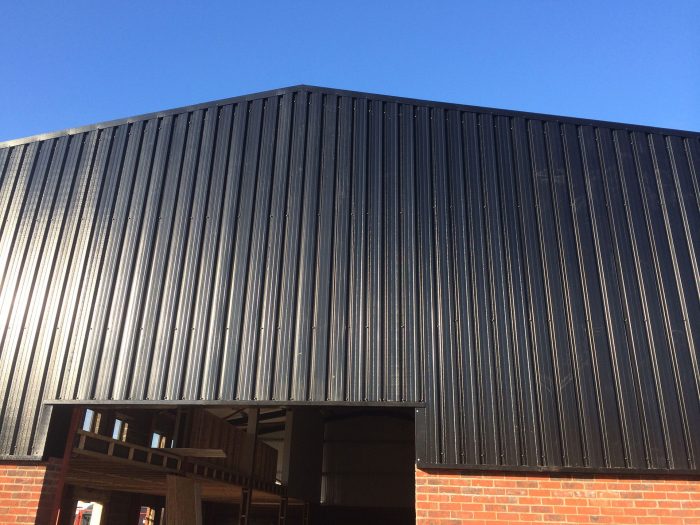
Metal sheets for wall covering present a compelling option for both interior and exterior applications, offering a unique combination of style, resilience, and longevity. By carefully considering the various types of metal, installation methods, design possibilities, and maintenance requirements, you can create a stunning and durable wall covering that enhances the aesthetic appeal and value of your space.
The careful planning and attention to detail Artikeld in this guide will ensure a successful project that stands the test of time.
